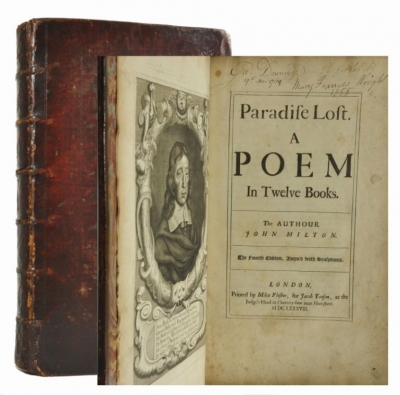
Having gone blind in 1652 John Milton, 17th century English poet, wrote “Paradise Lost through dictation with the help of an amanuensis (person employed to write what another dictates) and his friends because he had completely lost his vision. The first version of the epic published in 1667 consists of 10 books with over 10,000 lines of blank verse. It is centred around the biblical story of the fall of man, the temptation of Adam and Eve by Satan and their dismissal from Eden.
Many scholars consider Paradise Lost to be one of the greatest poems in the English language. It tells the biblical story of the fall from grace of Adam and Eve (and, by extension, all humanity) in language that is a supreme achievement of rhythm and sound. The 12-book structure, the technique of beginning in medias res (in the middle of the story), the invocation of the muse, and the use of the epic question are all classically inspired. The subject matter, however, is distinctly Christian.
The main characters in the poem are God, Lucifer (Satan), Adam, and Eve. Much has been written about Milton’s powerful and sympathetic characterization of Satan. The Romantic poets William Blake and Percy Bysshe Shelley saw Satan as the real hero of the poem and applauded his rebellion against the tyranny of Heaven.
Many other works of art have been inspired by Paradise Lost, notably Joseph Haydn’s oratorio The Creation (1798) and John Keats’s long poem Endymion. Milton wrote a companion piece, Paradise Regained, in 1671, which dramatizes the temptation of Christ.
Credit : Britannica
Picture Credit : Google




